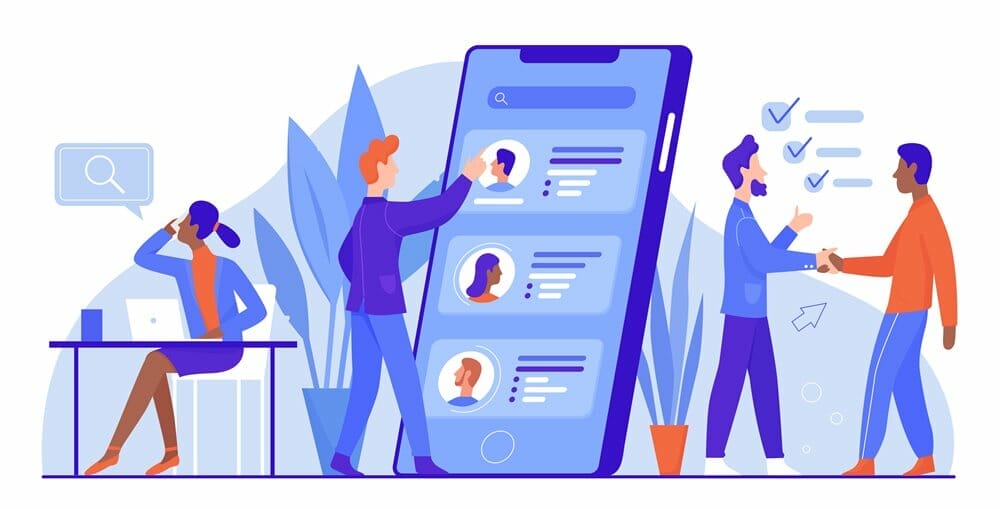In 2019, 3.5 million employees voluntarily left their jobs each month, according to data from the US Bureau of Labor Statistics. Other research indicates that of 1,000 people surveyed, 16.5 % had left their job within the first week! With the cost of hiring a new employee averaging $4,000 per hire, many organizations are looking at how to onboard in a way that engages and retains employees as early as possible.
Organizations face a number of key challenges in effectively and efficiently onboarding new employees. In particular, they have limited time to follow traditionally manual processes, are challenged with creating a consistent experience, and don’t have the systems and processes to execute such a vitally important function.
Getting new employees in the door, onboarded, and quickly integrated into the team is a labor-intensive and complex process that involves everything from completing employment paperwork and communicating job expectations to introducing team members, sharing of overall mission and values, and training to navigating the job and the organization. Human capital management (HCM) systems offer a powerful way to simplify and streamline onboarding.
Ineffective onboarding drives turnover
We’ve all heard horror stories about poor onboarding experiences, or worse yet when it doesn’t occur. People show up for the first day of work and don’t know where to go, don’t have the equipment they need, and may not even know who their manager is — a less-than-ideal experience for a new employee and one that significantly increases the likelihood of a short tenure with the organization.
In fact, reports from high-profile analysts suggest that employee turnover can be as much as 50% in the first four months for hourly workers and 50% in the first 18 months for senior outside hires, due almost exclusively to a poor or non-existent onboarding process.
Simply put: ineffective onboarding drives exceptional talent out the door. For both the tactical requirements and the desire to achieve operational excellence, there are four key elements to consider to improve onboarding through HCM technology:
- The desired new hire experience you want to create
- Automating as soon as possible once the hire is made
- Customizing to job-level onboarding
- Maximizing manager’s time
Using HCM to improve onboarding
An HCM reduces the stress and time required to create the best onboarding experience possible. Rather than leaning on individual managers or HR associates to recreate the onboarding process for each new hire, an HCM creates the opportunity to elevate and improve the experience for everyone involved.
Rethinking the new hire experience
The key to employee onboarding is putting yourself in the new hire’s shoes. Think back to when you joined your organization. What made you glad you made the decision you did, and what made you worry you’d made a mistake? Let that awareness drive your decisions and processes. Use technology to make new hires feel seen. Show them you’re invested in them. Whether it’s sending a welcome email, a video from the team, or even a list of what they’ll need on their first day, open the door to two-way communication. When you demonstrate excitement about their upcoming arrival, it will inspire the same feeling in them.
Automating as soon as possible once the hire is made
Starting a new job is stressful. That comes with the territory. So, whatever you can do to improve a new hire’s first few days on the job will help. Onboarding paperwork such as I-9 verification benefits enrollment, and acceptance of policies and confidentiality agreements can quickly diminish that first-day excitement. There’s a simple solution: automation. Automating onboarding paperwork with an onboarding HCM solution frees up time for everyone involved. It also makes it easier for employees to take time with the documents and complete them accurately, which saves your HR and Payroll teams time on the back end. Rather than a first day full of forms, new hires can be focused on engaging with the team and completing other essential tasks.
Customizing with job-specific onboarding
One size does not fit all when it comes to onboarding. Whether you give employees too much information, not enough information, or the wrong information, it leads to dissatisfaction. That dissatisfaction breeds productivity issues. Lack of employee engagement can be costly to your business through low productivity, absenteeism, and poor performance. Employees who are satisfied and have a sense of control in what they’re doing are “57% more likely to be engaged and 53% more likely to be productive.”
As part of improving onboarding experiences, look for ways to integrate a learning management system with your HCM. This will help you automatically assign relevant learning content and provide valuable educational opportunities for new employees. This type of customization allows them to perform their job more effectively and confidently, and start meeting the needs of your business sooner.
Amplifying manager-employee connections
It’s hard for new employees to onboard and continue to develop if they don’t understand what’s required. Unfortunately, many employees are in that position — a mere 58 percent of companies provide clear expectations for their employees. When you automate as much as possible in the onboarding process, you free up your managers to connect with new employees and provide the one-on-one guidance they need.
Rather than recreating the onboarding process with each new hire, an onboarding HCM can use position management to ensure new employee receives everything they need. Based on their role, automation can ensure new hires have the system access, training courses, or specific agreements they need to get started.
Make the right first impression with onboarding
As you consider how to improve your onboarding process and procedures, keep first impressions in mind. You want your new employees to walk away on their first day — and every day after that — knowing you support them.
With the support of HR tech, you have the tools and resources you need to simplify and streamline onboarding. Rethink your onboarding and find ways you can automate, customize and amplify the process to meet employee, manager, and organizational needs.
To maximize your time and institute consistent onboarding processes that engage new employees, you need a cloud-based, modern HCM.
Lucky for you, we’ve got you covered.
Please read our disclaimer here.









